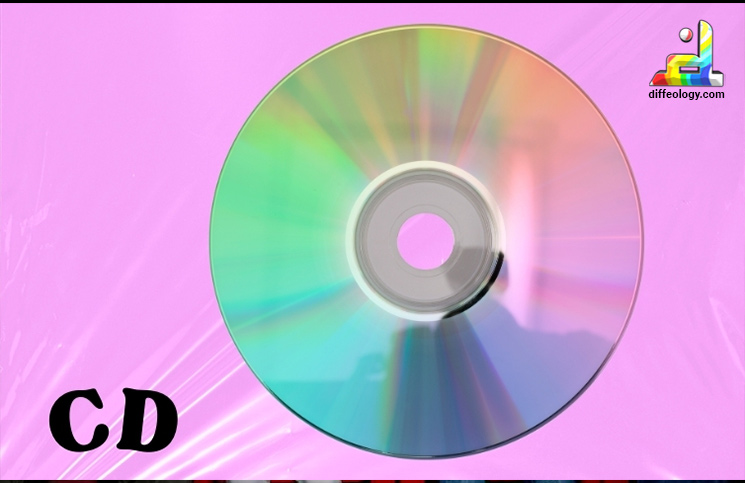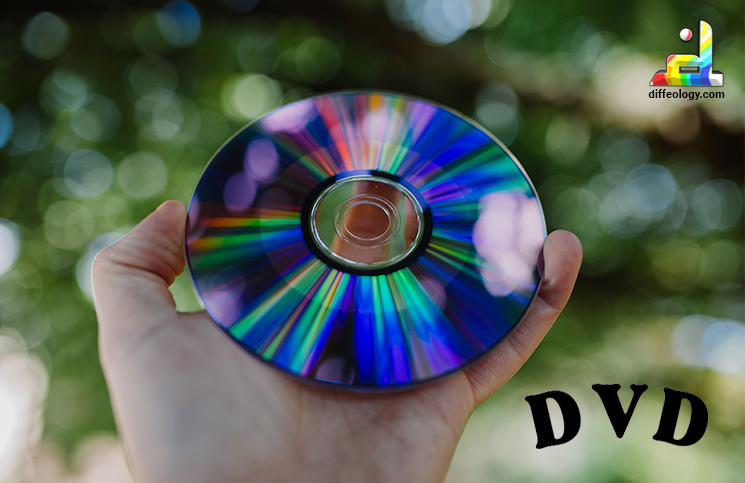Have you ever thought about those shiny discs you use to play your favorite games or watch movies? Well, let’s dive into the world of CDs and DVDs! Knowing the Difference Between CD And DVD is vital for you to pick the one that suits you the best. CDs, short for Compact Discs, and DVDs, which stand for Digital Versatile Discs, are like treasure chests filled with all sorts of adventures and fun. But did you know they’re not quite the same? In this article, we’re going to explore the main differences between CDs and DVDs, from how much stuff they can hold to the special technology that makes them work. So, buckle up and get ready for a journey into the exciting world of digital discs!
Main Difference Between CD And DVD
The main difference between a CD and a DVD is their storage capacity. CDs can typically hold up to 700 MB of data, while DVDs can store much more, ranging from 4.7 GB to 9 GB. This means DVDs can store large files like movies, TV shows, and high-quality video games, making them more versatile for multimedia purposes.
CD Vs. DVD
What is a CD?
A CD, short for Compact Disc, is like a small, shiny plate that stores information. Imagine it as a tiny, round version of a big silver dinner plate, but instead of holding food, it holds stuff like music, games, or pictures. You can pop a CD into a player, and it works like magic – playing your favorite songs or showing cool games on your computer. It’s like having a super special treasure chest filled with your favorite stuff that you can carry around easily.
Read Also: Difference Between Hardware and Software
Inside a CD, there’s a clever system that uses a special red light to read the information stored on it. It’s like having a secret code that only a special flashlight can understand. This light bounces off the shiny surface of the CD, decoding the information and turning it into the music or games you love. So, whenever you’re jamming out to your favorite tunes or battling dragons in a game, just remember it’s all thanks to that little CD spinning around inside your player!
What is a DVD?
A DVD, which stands for Digital Versatile Disc, is like a big brother to the CD. It’s a round disc, just like a CD, but it can hold a lot more cool stuff like movies, TV shows, and big video games. Imagine it as a superhero version of a CD, able to store way more adventures and fun. When you pop a DVD into a player, it’s like opening a treasure chest full of your favorite movies or games, ready to play on your TV or computer screen.
Read Also: Difference Between Laser and Optical Mouse
What makes DVDs even cooler is their super-fast laser technology. Instead of a regular red light like CDs use, DVDs have a special blue light that can read and write information even faster. It’s like having a lightning-fast superhero helping you watch your favorite movies in high-quality pictures and sound. So, whether you’re watching the latest action-packed movie or exploring new worlds in a video game, DVDs are there to make your adventures bigger and better!
Comparison Table “CD Vs. DVD”
| Physical Size | Smaller | Larger |
| Storage Capacity | Up to 700 MB | 4.7 GB to 9 GB |
| Laser Technology | Uses a red laser | Uses a blue laser |
| Data Structure | ISO 9660 format | UDF or DVD-Video format |
| Playback Devices | Requires CD player | Requires DVD player |
| Video Quality | Lower resolution | Higher resolution |
| Purpose | Primarily for audio | Primarily for video |
| Compatibility | DVD players can’t play CDs | CD players can’t play DVDs |
| Cost | Generally cheaper | Generally more expensive |
| Longevity | Tends to last longer | More prone to damage over time |
| Durability | More resistant to scratches | More susceptible to scratches |
| Data Transfer Rate | Slower data transfer rate | Faster data transfer rate |
| Sector Size | Smaller sector size | Larger sector size |
| Tracks and Layers | Single track | Multiple layers and tracks |
| Error Correction | Less advanced error correction | More advanced error correction |
| Multi-session Support | Limited multi-session support | Supports multi-session recording |
| Popularity | Less popular for movies and data | More popular for movies and data |
| Software Applications | Basic software | Complex software and video editing applications |
| Blank Media Cost | Cheaper | More expensive |
Difference Between CD And DVD In Detail
1. Size and Capacity:
CDs and DVDs differ in both physical size and storage capacity. Imagine CDs as smaller, rounder discs and DVDs as larger ones. CDs typically hold up to 700 MB of data, which is like storing thousands of songs or a few hundred photos. On the other hand, DVDs can store around 4.7 GB to 9 GB of data, allowing you to save longer videos, more complex software, or a larger collection of files.
2. Laser Technology:
The way CDs and DVDs store information is through lasers. CDs use a red laser to read and write data onto its surface. This laser has a longer wavelength compared to the one used in DVDs. DVDs, however, use a shorter wavelength blue laser, enabling them to store more data in a smaller space. It’s like using a different type of flashlight to see things clearer in different-sized rooms.
3. Data Structure:
CDs and DVDs have different data structures. CDs use a format called ISO 9660, which organizes data in a specific way suitable for CDs. DVDs, on the other hand, can use different formats like UDF (Universal Disk Format) or DVD-Video for movies. It’s akin to organizing books on a shelf differently depending on whether it’s a small or large book.
4. Playback Devices:
CDs and DVDs require different types of playback devices. CD players are designed to read and play CDs, while DVD players are needed for DVDs. However, many modern devices, like computers and gaming consoles, can play both CDs and DVDs, which is like having a versatile tool that can handle multiple tasks.
5. Video Quality:
When it comes to video quality, DVDs generally offer better resolution compared to CDs. DVDs can display videos in formats like SD (Standard Definition) or even HD (High Definition), providing clearer and sharper images. CDs, on the other hand, are primarily used for audio or data storage and aren’t suitable for high-quality video playback. It’s like comparing a regular picture to a high-definition one – the details are much clearer in the latter.
6. Purpose and Usage:
CDs were initially created to store and play audio files, like music albums. Over time, they became popular for storing data, software, and other multimedia content. DVDs, however, were designed with video in mind, particularly movies. They can store full-length films with bonus features and enhanced audio tracks. DVDs are like the bigger sibling of CDs, tailored for more extensive multimedia needs.
7. Compatibility:
While CDs and DVDs are similar in many ways, they’re not always compatible with each other’s players. For example, a DVD player cannot play a CD, and vice versa. However, some devices, like Blu-ray players, can play both CDs and DVDs, making them more versatile. It’s similar to how some toys can only fit specific types of blocks while others can fit multiple shapes.
8. Cost:
Cost is another factor that sets CDs and DVDs apart. Generally, DVDs are more expensive to produce than CDs due to their higher storage capacity and more advanced technology. This cost difference can be reflected in the price you pay when buying music albums, movies, or software on these formats. It’s like comparing the price of a small backpack to that of a larger suitcase – the bigger one costs more to make.
9. Longevity and Durability:
CDs and DVDs also differ in their longevity and durability. CDs are often considered more resilient and can last for decades if properly stored and handled. DVDs, however, are more sensitive to scratches and environmental factors like sunlight and moisture, which can degrade their quality over time. It’s like comparing a sturdy rock to a delicate flower – one lasts longer in harsh conditions.
Key Difference Between CD And DVD
- Physical Size: CDs are smaller, while DVDs are bigger.
- Storage Capacity: CDs hold less data (up to 700 MB), and DVDs hold more (4.7 GB to 9 GB).
- Laser Technology: CDs use a red laser, and DVDs use a blue laser.
- Data Structure: CDs use ISO 9660, and DVDs use UDF or DVD-Video formats.
- Playback Devices: CD players play CDs, DVD players play both CDs and DVDs.
- Video Quality: DVDs offer better video resolution than CDs.
- Compatibility: DVD players can play CDs, but CD players can’t play DVDs.
- Cost: DVDs are generally more expensive than CDs.
- Longevity: CDs tend to last longer than DVDs.
- Durability: CDs are more resistant to scratches and damage than DVDs.
- Data Transfer Rate: DVDs have a faster data transfer rate than CDs.
- Sector Size: DVDs have larger sector sizes than CDs.
- Tracks and Layers: CDs have one track, and DVDs can have multiple layers and tracks.
- Error Correction: DVDs have better error correction than CDs.
- Multi-session Support: DVDs support multi-session recording, CDs may not.
- Popularity: DVDs became more popular than CDs for movies and data storage.
FAQs: CD Vs. DVD
Conclusion:
And there you have it, folks! CDs and DVDs might look similar, but they’re like siblings with their own unique traits. From the amount of data they can store to the way they play your favorite music or movies, CDs and DVDs have their own roles in our lives. Whether you’re jamming out to your favorite tunes on a CD or diving into epic adventures on a DVD, these shiny discs are here to make our entertainment experiences bigger and better. As you know the difference between CD and DVD, you can buy any of them according to your requirements.
References & External Links
- The history and evolution of the Compact Disc (CD)
- The History of the DVD
- How to Tell if a Disc Is a CD or a DVD: 7 Steps (with Pictures)



